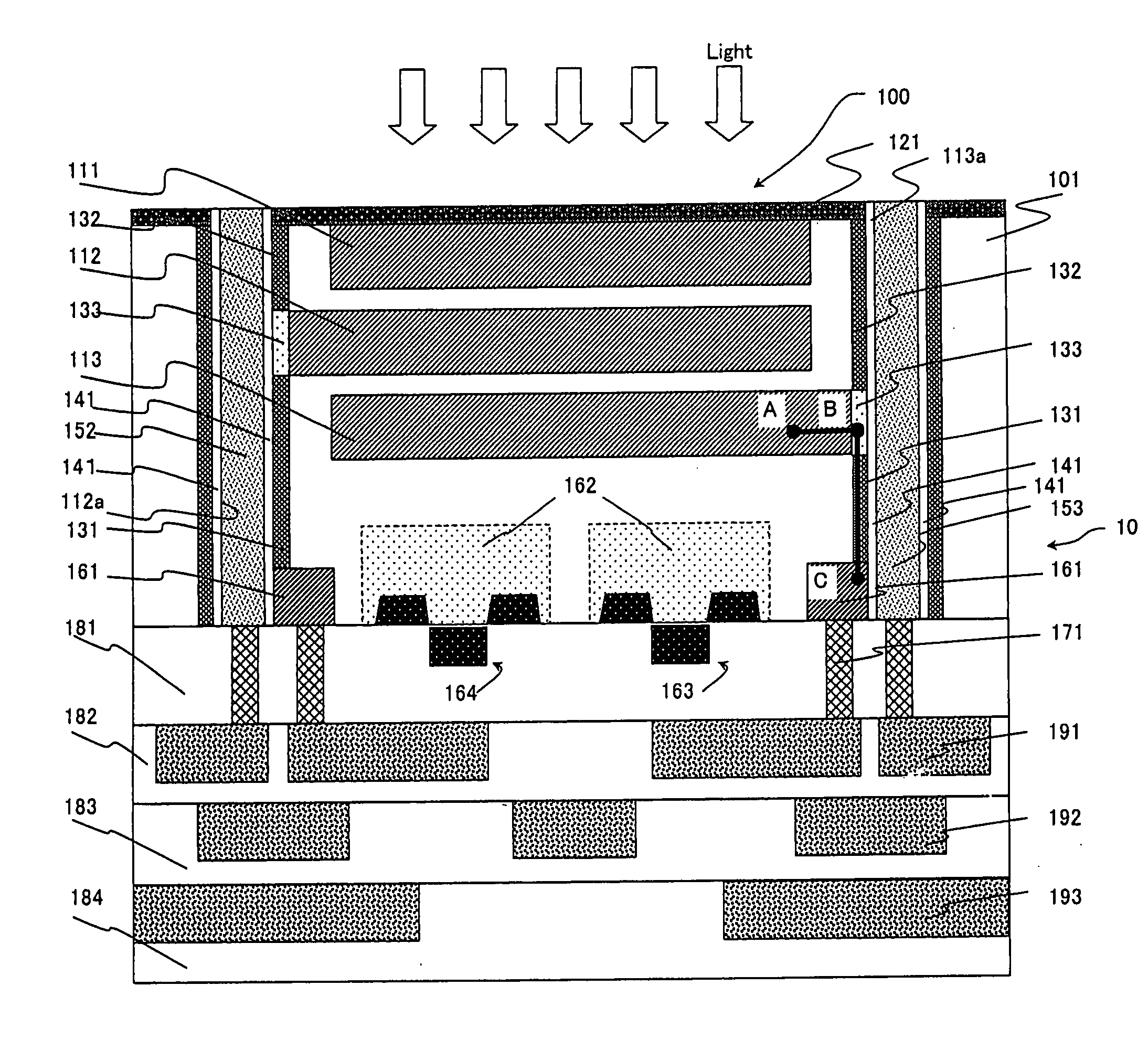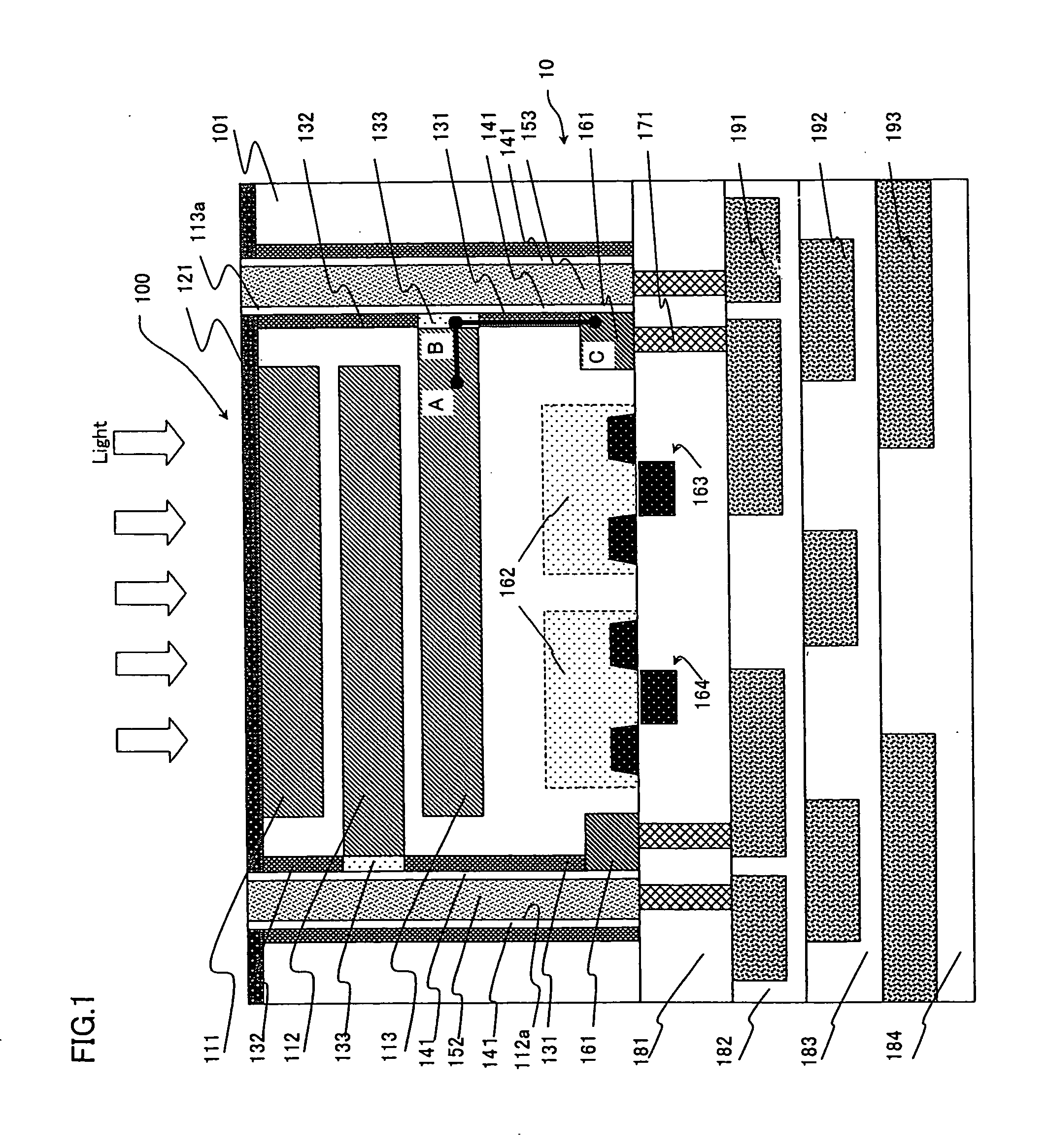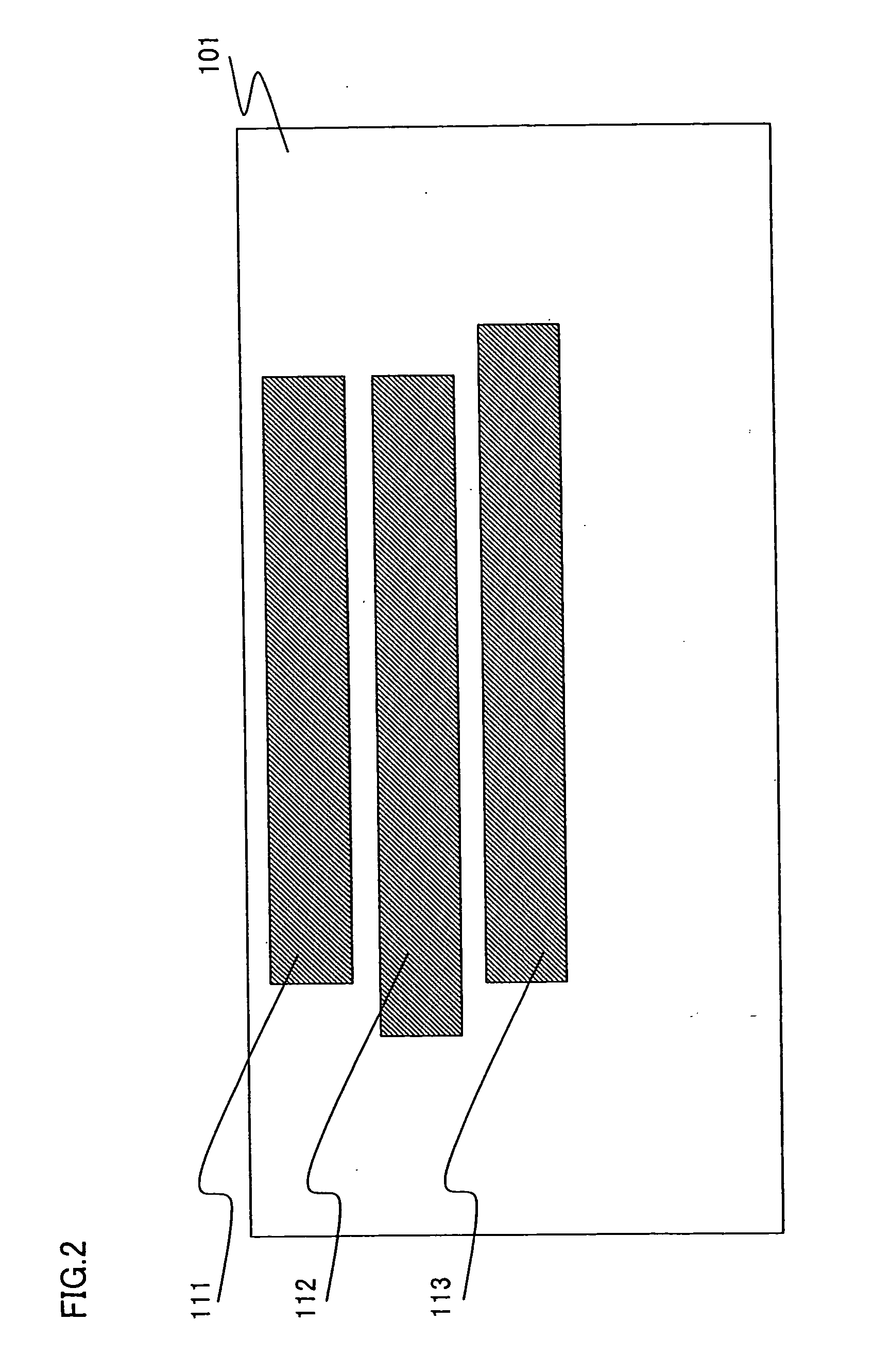Solid-state image capturing apparatus, method for manufacturing the same, and electronic information device
a technology of solid-state image and capturing apparatus, which is applied in the direction of color television, television system, radio control device, etc., can solve the problems of residual image degrading image quality, difficult to apply conventional reducing the resolution of solid-state image capturing apparatus, etc., to achieve the effect of improving light receiving efficiency, reducing readout voltage, and enlarge the size of the light receiving region
- Summary
- Abstract
- Description
- Claims
- Application Information
AI Technical Summary
Benefits of technology
Problems solved by technology
Method used
Image
Examples
embodiment 1
[0107]FIG. 1 is a longitudinal cross-sectional view showing an exemplary essential structure of a solid-state image capturing device according to Embodiment 1 of the present invention.
[0108]In a solid-state image capturing device 100 according to Embodiment 1 in FIG. 1, a case is described where the solid-state image capturing device 100 includes a first light receiving section 111 for detecting an electromagnetic wave of a first wavelength band, a second light receiving section 112 for detecting an electromagnetic wave of a second wavelength band, and a third light receiving section 113 for detecting an electromagnetic wave of a third wavelength band, as a plurality of light receiving section. In this case, three colors having different wavelength bands of light are considered to be, for example, three primary colors of R (red), G (green), and B (blue). Hereinafter, a case is described where blue light is detected in the first wavelength band, green light in the second wavelength b...
embodiment 2
[0144]In Embodiment 1 described above as shown in FIG. 3(A), where the light receiving sections 111-113 are arranged in a square or rectangle lattice shape, the three layered light receiving sections 111-113 each are formed such that respective sides of the light receiving sections are extended towards different substrate plane directions from the center (the sides of the light receiving sections are extended towards the periphery in such a way that the light receiving sections each will not overlap in a plane view). In Embodiment 2, as shown in FIG. 3(B), a case is described where each of the pixel sections is arranged in a hexagon shape in a plane view and the plurality of the pixel sections are arranged in a honeycomb structure (beehive structure), in which each of the pixel sections is shifted by a half period in the honeycomb structure, and three layers of the light receiving sections 211-213 are formed in such a way that each of the edges of the respective light receiving sect...
embodiment 3
[0148]In Embodiment 1 described above, the solid-state image capturing device 10 laminated with three layers of the light receiving sections 111-113 to detect three primary colors of R, G and B. In Embodiment 3, a case is described where a solid-state image capturing apparatus has a solid-state image capturing device, whose light receiving sections are laminated with four layers to detect four colors.
[0149]In Embodiment 3, there are N (N is a natural number) numbers of light receiving sections provided in a depth direction of a semiconductor substrate, the light receiving sections being from the first light receiving section for detecting an electromagnetic wave of a first wavelength band to the Nth light receiving section for detecting an electromagnetic wave of an Nth wavelength band. A case is provided here where the plural number of Nth layers is four layers. In such a case as this, four layers (four colors) of light receiving sections, such as a first light receiving section fo...
PUM
 Login to View More
Login to View More Abstract
Description
Claims
Application Information
 Login to View More
Login to View More - R&D
- Intellectual Property
- Life Sciences
- Materials
- Tech Scout
- Unparalleled Data Quality
- Higher Quality Content
- 60% Fewer Hallucinations
Browse by: Latest US Patents, China's latest patents, Technical Efficacy Thesaurus, Application Domain, Technology Topic, Popular Technical Reports.
© 2025 PatSnap. All rights reserved.Legal|Privacy policy|Modern Slavery Act Transparency Statement|Sitemap|About US| Contact US: help@patsnap.com



